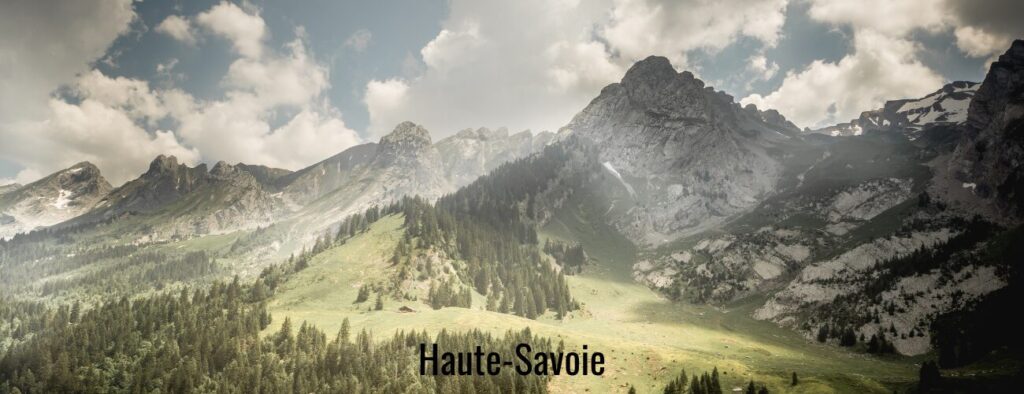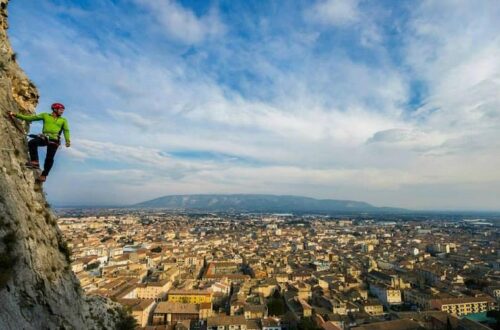Conquering the Via Ferrata de la Roche à l’Agathe in Thônes, Haute-Savoie
High above the town of Thônes in the Haute-Savoie region of France, the Via Ferrata de la Roche à l’Agathe is a thrilling climbing experience that combines physical challenge with breathtaking alpine vistas. This route, known for its accessibility and progressive difficulty, gives climbers a unique chance to engage with the rugged beauty of the Aravis Mountains.

A Glimpse into Thônes and Its Iconic Via Ferrata
Thônes, in the heart of the Aravis massif, is a picturesque town that serves as a gateway to numerous alpine adventures. The Via Ferrata de la Roche à l’Agathe, situated directly above the town, epitomizes the French style of via ferrata—routes that are aerial, well-equipped, and often located near inhabited areas . This particular route offers climbers a chance to ascend a rock face while enjoying sweeping views of the town and the surrounding valleys
Click the link to read about another fantastic Via Ferrata adventure.
Route Overview and Technical Details
- Location: Thônes, Haute-Savoie, France
- Altitude: Starts at approximately 660 meters; summit at 895 meters
- Elevation Gain: 235 meters
- Length: 600 meters
- Exposure: Southwest-facing
- Difficulty Levels: Three sections—D (Difficult), D+ (Slightly More Difficult), and ED (Extremely Difficult)
- Estimated Duration: 2 to 3 hours for the entire route, including descent
- Access: Approximately a 10-minute walk from the parking area
- Return Path: 30-minute descent through beech forest
Click here for a selection of terrific European adventures.
The Climb: A Section-by-Section Breakdown
1. The Initiation (Section 1 – D)
The adventure starts with a series of gentle slabs and a 5-meter monkey bridge, setting the tone for the climb ahead. This section, rated as Difficult (D), is the longest of the three and introduces climbers to the vertical world with manageable challenges. A few overhangs test the climber’s strength and technique, but the well-placed metal rungs and cables provide ample support .
If you want to lose weight before attempting Via Ferratas, click here.
2. The Ascent Intensifies (Section 2 – D to D+)
Progressing to the second section, the route gets tougher. Climbers come to steeper inclines and more pronounced overhangs, requiring increased upper body strength and endurance. This segment is rated between Difficult (D) and Slightly More Difficult (D+), depending on the chosen path. Notably, there are two escape routes in this section, allowing climbers to exit if necessary .
3. The Final Challenge (Section 3 – ED)
The climax of the via ferrata presents climbers with a choice: ascend a vertical ladder known as the “Échelle des sapeurs de l’Empire” or tackle a strenuous overhang. Both options are rated as Extremely Difficult (ED) and demand significant physical prowess and mental fortitude. The ladder ascent is particularly thrilling, as climbers face outward over the valley, adding an extra layer of excitement to the experience .

Descent and Return
After reaching the summit, climbers are rewarded with panoramic views of the Tournette massif and the town of Thônes below. The descent trail is well-marked and partially equipped with safety cables, guiding adventurers through serene beech forests and past a quaint chapel before returning to the starting point.
Essential Equipment and Preparation
To ensure a safe and enjoyable climb, the following equipment is mandatory:
- Climbing Helmet: Protects against potential rockfall and head injuries.
- Harness: Secures the climber to the safety cables.
- Via Ferrata Lanyard with Energy Absorber: Reduces the impact force in case of a fall.
- Gloves: Protect hands from abrasions and provide better grip.
- Sturdy Footwear: Approach shoes or hiking boots with good traction are recommended.
You need to be in good condition for Via Ferratas. Click here to kickstart your health and fitness.
Tips for a Successful Climb
- Start Early: Given the route’s southwest exposure, it’s advisable to begin the climb in the morning to avoid the intense afternoon sun.
- Physical Fitness: Ensure you’re in good physical condition, as the route demands strength and endurance, especially in the final section.
- Hydration and Nutrition: Bring sufficient water and energy-rich snacks to maintain stamina throughout the climb.
- Weather Awareness: Check the weather forecast before embarking, as wet or icy conditions can make the route hazardous.
- Guided Tours: For those new to via ferrata or seeking additional safety, consider hiring a certified guide from local agencies .
Click here for a selection of stylish, practical and outdoors appropriate menswear.
Conclusion
The Via Ferrata de la Roche à l’Agathe stands as a testament to the allure of alpine adventures in the French Alps. Its combination of accessibility, breathtaking scenery, and escalating challenges make it a must-visit for climbing enthusiasts. Whether you’re a seasoned via ferratist or a motivated beginner, this route promises an unforgettable experience high above the picturesque town of Thônes.

